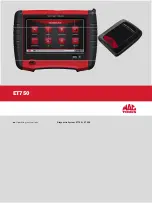
3
3..3
3..4
4 T
Th
hee C
Coon
nvveen
nttiioon
naall M
Meetth
hood
d
“The Conventional Method" requires the user to remove the white conversion tab ((M
M)) before snapping the catheter out of the
P
P
E
ER
RFFo
oR
R
M
MA
AX
XX
X®® G
Grriip
p. The stent can then be deployed by using the conventional “pin & pull-back” technique by pulling back the T-Luer
adapter ((FF)). ((S
Seeee FFiig
gu
urree 3
3))
FFiig
gu
urree 1
1::
FFiig
gu
urree 2
2::
FFiig
gu
urree 3
3::
T
Trriig
gg
geerr M
Meetth
hood
d
S
Slliid
dee M
Meetth
hood
d
C
Coon
nvveen
nttiioon
naall M
Meetth
hood
d
A removable red Safety Clip ((K
K)) prevents accidental or premature stent release. D
Do
o N
No
oT
T remove the Safety Clip ((K
K)) until you are ready
to deploy the stent. Just prior to deploying the stent, the Safety Clip ((K
K)) must be removed by pressing the two red tabs ((LL)) together and
removing the clip from the grip.
3
3..4
4
R
Raad
diioop
paaq
qu
uee M
Maarrkkeerrss aan
nd
d V
Veerriiffiiccaattiioon
n ooff P
Poossiittiioon
niin
ng
g::
There are four radiopaque tantalum markers on each end of the stent and an additional radiopaque marker band on the outer catheter
of the deployment system. In its compressed stage, the tantalum markers appear like a contiguous band at each end of the stent:
• Four radiopaque tantalum markers on each end of the stent indicate the location of the distal ((B
B1
1)) and proximal end of the
compressed stent ((B
B2
2))
• one radiopaque marker band is attached to the outer catheter ((C
C,, ssaam
mee p
poossiittiioon
n aass B
B1
1)) and overlaps the four distal markers on the
stent prior to deployment. This moving marker indicates the amount of stent deployed during the procedure.
During stent deployment, the radiopaque markers on the stent ((B
B1
1 aan
nd
d B
B2
2)) should not move. The marker band ((C
C)) on the outer catheter
will retract with the outer catheter during stent deployment. When the moving marker is past the proximal marker ((B
B2
2)) by 2 cm, the
stent is fully released.
4
4..0
0
IIN
ND
DIIC
CA
AT
TIIo
oN
NS
S FFo
oR
R U
US
SE
E
The B
B
A
AR
RD
D
®® E
E
LL
U
UM
MIIN
NE
EX
XX
X
®® V
Vaassccu
ullaarr S
Stteen
ntt is indicated for:
• Residual stenoses with impaired perfusion (pressure gradient) following balloon dilatation, especially in stages III and IV according
to Fontaine
• Dissection
• Detached arteriosclerotic plaque material and luminal obstruction following balloon dilatation
• occlusion after thrombolysis or after aspiration and before dilatation
• Restenosis or reocclusion
5
5..0
0
C
Co
oN
NT
TR
RA
AIIN
ND
DIIC
CA
AT
TIIo
oN
NS
S
Contraindications for the B
B
A
AR
RD
D
®® E
E
LL
U
UM
MIIN
NE
EX
XX
X
®® V
Vaassccu
ullaarr S
Stteen
ntt include, but may not be limited to:
• Uncorrected coagulopathies
• Functionally relevant obstruction of the inflow path, poor outflow or no distal runoff
• Fresh, soft thrombotic or embolic material
• Placement in the distal superficial femoral artery
• Placement in the popliteal artery
6
6..0
0
W
WA
AR
RN
NIIN
NG
GS
S
6
6..1
1
G
Geen
neerraall W
Waarrn
niin
ng
gss::
• Should unusual resistance be felt at any time during the procedure, the entire system (introducer sheath or guiding catheter and
stent delivery system) should be removed as a single unit.
• Patients with known hypersensitivity to nickel-titanium may suffer an allergic reaction to this implant.
• Stenting across a major bifurcation may hinder or prevent future diagnostic or therapeutic procedures.
• overstretching the artery may result in spasm, dissection, and/or perforation that may result in serious complications.
6
6..2
2
D
Deevviiccee W
Waarrn
niin
ng
gss::
• Visually inspect the packaging to verify that the sterile barrier is intact. D
Do
o N
No
oT
T use if the sterile barrier is open or damaged.
• D
Do
o N
No
oT
T use the device after the “Use By” date specified on the label.
• Visually inspect the B
B
A
AR
RD
D
®® E
E
LL
U
UM
MIIN
NE
EX
XX
X
®® V
Vaassccu
ullaarr S
Stteen
ntt to verify that the device has not been damaged due to shipping or improper
storage. D
Do
o N
No
oT
T use damaged equipment.
• Take care to avoid unnecessary handling, which may kink or damage the delivery system. D
Do
o N
No
oT
T use if device is kinked.
• If the red safety clip has been removed or becomes inadvertently detached from the grip, D
Do
o N
No
oT
T use the device.
• The delivery system catheter is intended for stent deployment only and not for any other use.
• During system flushing, D
Do
o N
No
oT
T use the system if fluid is not observed exiting the catheter at the distal tip.
• If placing two overlapping stents, both stents must have identical diameters and similar metal composition.
• once the stent is partially or fully deployed, micro-adjustments are no longer possible and the stent should not be dragged or
repositioned in the lumen.
• once stent deployment has been initiated, the stent cannot be recaptured using the stent delivery system.
• If the P
P
E
ER
RFFo
oR
R
M
MA
AX
XX
X®® G
Grriip
p is removed from the stent delivery system, it M
MU
US
ST
T N
No
oT
T be reattached. In this event, the stent M
MU
US
ST
T be
deployed using “The Conventional Method” of deployment. (See instructions for “The Conventional Method”.)
• This product has been designed for single patient use only. D
Do
o N
No
oT
T reuse. D
Do
o N
No
oT
T resterilize.
• After use, the stent delivery system is a potential biohazard. Handle and dispose of this product in accordance with accepted medical
practice and with applicable local, state and federal laws and regulations.
7
7..0
0
P
PR
RE
EC
CA
AU
UT
TIIo
oN
NS
S
This device is intended for use only by physicians who are familiar with the principles, clinical applications, complications, side effects,
and risks commonly associated with vascular stenting. It is strongly recommended that physician operators adhere to all applicable
institutional, local, state, and federal guidelines and protocols regarding adequate procedural training.
7
7..1
1
S
Syysstteem
m H
Haan
nd
dlliin
ng
g P
Prreeccaau
uttiioon
nss::
• Non-compliance with sterility precautions may lead to infectious complications.
• An appropriate guidewire is required before introducing the stent deployment system into the body, and must remain in place during
the introduction, manipulation and eventual removal of the stent deployment system.
• The B
B
A
AR
RD
D
®® E
E
LL
U
UM
MIIN
NE
EX
XX
X
®® V
Vaassccu
ullaarr S
Stteen
ntt is only compatible with a 0.035“ (0.89 mm) guidewire.
• When catheters are in the body, they should be manipulated only under fluoroscopy with radiographic equipment that produces high
quality images.
• Read and understand the IFU for any interventional device to be used in conjunction with the B
B
A
AR
RD
D
®® E
E
LL
U
UM
MIIN
NE
EX
XX
X
®® V
Vaassccu
ullaarr S
Stteen
ntt.
• The delivery system is not designed for use with power injection systems.
• Faulty placement techniques could lead to stent deployment failure.
• Do not kink the delivery system.
6
BAWB05657:BAWB05657
08.03.2010
15:51
Seite 6
Содержание E-Luminexx Vascular Stent
Страница 79: ...79 BAWB05657 BAWB05657 08 03 2010 15 52 Seite 79...
Страница 80: ...80 BAWB05657 BAWB05657 08 03 2010 15 52 Seite 80...
Страница 94: ...BAWB05657 BAWB05657 08 03 2010 15 52 Seite 94...
Страница 96: ...BAWB05657 BAWB05657 08 03 2010 15 52 Seite 96...
Страница 98: ...BAWB05657 BAWB05657 08 03 2010 15 52 Seite 98...
Страница 100: ...BAWB05657 BAWB05657 08 03 2010 15 52 Seite 100...
Страница 102: ...BAWB05657 BAWB05657 08 03 2010 15 52 Seite 102...







































